答辩现场:
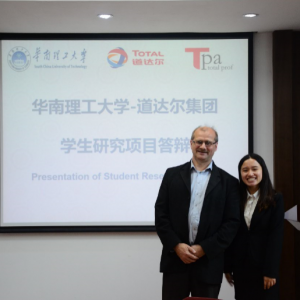 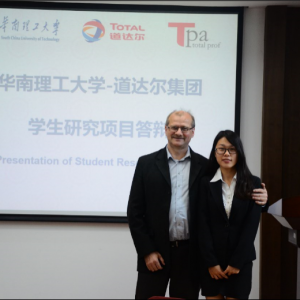
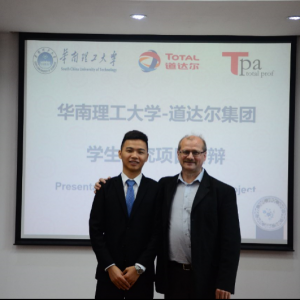 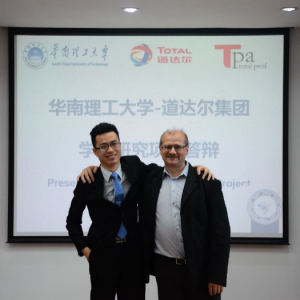
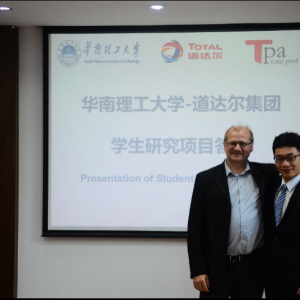 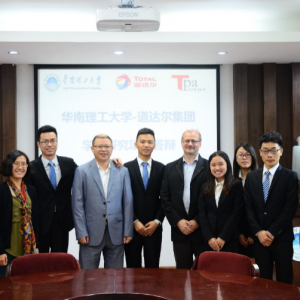
答辩PPT汇总:
白升斌.pdf廖宏辉.pdf崔雅慧.pdf叶京生.pdf徐莹莹.pdf
论文摘要汇总:
白升斌 Abstract Recent years, the number of diasaters that result from fire load and explosion is increasing. and the recent researches about the nuerous factors of oil and gas pipeline failure neglect the influence factor from subsequent fire load and explosion. Chemical pipelines arrangement is criss-cross, and there are a wide range of it. The physicochemical properties of transport media is various, and the piping system is multi-junction, so the risk of fire and explosion is high. the ralease of pipe may cause the explosion effects spread from one plot/unit to adjacent plot/units and to people beyond the plant boundary. For onshore plants a major goal is to prevent the spread of explosion effects from one plot/unit to adjacent plot/units and to people beyond the plant boundary. The objective of this Technical Note is to provide a methodology on the design and the protection piping systems and piping supports on both offshore installations and onshore plants for fires and explosions. The guidance covers the methods used to carry out both simplified design checks and advanced non-linear analysis. Three design and analysis methods for explosions are described. The basic Category 1 analysis is a simple static load and code check approach to ASMH B31.3. Category 2 is an enhancement of the method, with SDOF analysis to determine and incorporate suitable Dynamic Load Factors. Category 3 is a full MDOF - NLFEA approach for more complex situations. Categories 1 and 2 are illustrated by worked examples. The industry experience has shown that there are practical limits to the general level of explosion resistance that can be achieved with process piping. It is consequently necessary to take measures in the overall plant design and local layout to reduce probable explosion pressures. An extensive part of the guide is devoted to this aspect, the objective being to reduce hazard and consequence by implementation of the principles of inherently safe design. For onshore plants a major goal is to prevent the spread of explosion effects from one plot/unit to adjacent plot/units and to people beyond the plant boundary (Land-use planning aspects). An important feature that distinguishes design of piping systems from design of structures is that structures respond principally to the overpressure effects of explosions whereas pipe systems respond mostly to drag (explosion wind). Guidance is therefore given on how to relate drag loads to design overpressure loads, especially where the latter are produced probabilistically. Inevitably, some reliance on CFD modelling is required and guidance on this area is also included. The ability of pressure-relieving and depressurisation systems to safeguard pressurised systems is critically dependent upon the assumptions made about the type and size of the threatening fire and the consequential levels of heat flux that each process segment is likely to be subject to. The onshore and offshore industry has traditionally used the American Petroleum Institute’s Recommended Practices (API RP 520 and 521) when designing pressure relief systems to enable pressure vessels and associated pipework to withstand the effects of fire. The recommendations in API RP 521 are typical for conditions of low heat flux fires in a refinery or chemical plant. However, it is now widely recognised that, should process plant fitted with protected systems designed to API RP 521 or a similar standard be exposed to severe fires, such systems may be insufficient to prevent failure of the pressure system before the inventory has been safely removed. The next revision of API RP 521 will incorporate restrictions as to its applicability to low heat flux and non-impinging / non-engulfing fires. It is neither practical nor necessary to design all pipes to withstand explosion and/or fire effects and a two-level criticality rating system is advocated for those pipes that do require treatment.
Key Words:drag load;Piping stress analysis;explosion parameters;Fire characteristics;fire load;fire protection.
崔雅慧 Abstract Hydrocarbon fire is very harmful for human society, its indirect losses is far greater than the direct property loss. The harm of explosion, spill of chemicals and other issues caused by fire can not be estimated. Therefore, risk analysis and fire protection is a long-term task. It is necessary to identify and analyze all fire hazards and their associated effects and ensure that the risk corresponding to the fire hazards are as low as reasonably practicable. The fire hazards should be prioritized and a combination of prevention, detection, control and mitigation systems should be implemented. Hydrocarbon fire was mainly caused by combustible gas or liquid spilling and contacting with an ignition source. Currently, hydrocarbon fire is mainly divided into jet fire and pool fire. Jet fires can be produced following the pressurized release of a variety of fuel types. However, pool fire is a turbulent diffusion fire burning above a pool of vaporizing liquid fuel. Fire radiation to environment and conduction to engulfed objects can lead to great damage, which makes the steel structure in the near building deformat, collapse or even melt, causing huge casualties and property losses. In this article, scene design about two different fire according to flame characteristics is carried out, which can analyze the nature and characteristics of the fire and measure heat load of the object to assess the risk of fire. For fire control, design confinement and deluge system to observe the impact of ventilation and deluge for fire. And then select proper measures for different fire type and different fire stage. Fire protection on onshore structures is generally designed to ensure the structure survives the conflagration because the safe evacuation onshore is much easier. If a fire occurs on an offshore structure, however, the priority is the safe evacuation of personnel, with long-term damage to the structure being of lesser importance. According to this feature, this article individually designs pool fire on offshore structure to explore the possibility and hazards of fire. Meanwhile, the steel structural response at elevated temperature is discussed in this article, and draw the thermal properties and mechanical properties about structural carbon steels and structural stainless steels at elevated temperature. The main material properties required for structural fire design are reduction factors for yield strength and stiffness at elevated temperatures. These are derived from generic equations for stress-strain relationships at elevated temperatures. Moreover, this article uses a simplified model of the fire resistance of steel structures to learn the design of the four categories of fire resistance member. Through the results of this research, it provides theoretical analysis methods for structural fire design of hydrocarbon fire and structural response of steel member.
Key Words: Fire loading; Jet fire; Pool fire; Structural fire design; Structural response.
廖宏辉 Abstract Iron has a very rich reserves on the earth, it has been widely used in our daily life and industrial production in the form of structural steel, tool steel, special steel and specialty steel. High strength steel is often used on offshore structures where there is a risk of accidental fire and blast loads. Such as the offshore drilling platform, it is very likely suffering the risk of fire and blast in the process of getting the oil and other kinds of hydrocarbons Steel is extensive used for offshore platforms, the performance of steel under the condition of fire and explosion directly related to the safety of offshore platform and facilities. Therefore,as for the design for fire and explosions, it has a vital significance for the study of all kinds of steel under elevated temperature and high strain rates. Steel under conditions of high temperature and high strain rate, typically occurs strength decreases, deformation, bending or strain hardening and so on. In this paper,the studies were carried out for the steel of different grades and thickness under the condition of elevated temperature and high strain rate with the establishment of a variety of analytical methods and analytical model, in order to get -the stress-strain relationships, temperature-strain relationships, temperature-strength relationships of different kinds of steel, thereby obtaining the variation of performance under high temperature and high strain rate of all kinds of steel. with the use of steady state (isothermal) test method and transient state (anisothermal) test method and the establishment of carbon steel model、stainless steel model, the studies of different kinds of steel were carried out under elevated temperature. At high strain rates, we carried the studies for different kinds of steel by means of Cam, wedge plastometer and drop hammer, and we also have taken advantage of the Charpy impact test and Cowper - Symonds relationship for the research of structural Carbon steel and stainless steel. Meanwhile, some research were carried out in order to ascertain the sensitivity of their mechanical properties to strain rate for some typical steel
Keywords:elevated temperature; high strain rates; stress-strain relationships; non-linear methods; stainless steel model; carbon steel model.
徐莹莹 Abstract Major fire explosion accident will bring huge casualties and economic losses to the society. In the offshore oil and gas industry of high risk, hydrocarbon fire and explosion accident caused by liquefied hydrocarbon leakage, should not be ignored that the effects on the production safety. The relevant standards in its combustible liquid fire hazard classification of France, the Netherlands and Britain and other countries, had listed liquefied hydrocarbon as category 1. Also, the United States, Germany, Italy and other countries make standard of liquefied hydrocarbon storage and transportation. In China to carry out the studies of hydrocarbon fire prevention, will make up the lack of China in this field, and enhance oil production safety consciousness. This paper contains the research of FABIG (The Fire and Blast Information Group). It describes the range of possible fire scenarios, the parameters that affect the nature of these scenarios, possible locations of fire hazards on offshore structures and provides guidance on fire hazard management strategies. Simplified guidance on estimating the fire loads of hydrocarbon pool fires and jet fires for design are given. And the paper gives guidance on heat transfer and temperature development in steel members. It summarizes general principles of passive fire protection, noting key standards, and discusses active mitigation systems and their effect on pool and jet fires.
Key words:hydrocarbon fire, fire protection, pool fire, jet fire, passive fire protection, active fire protection
叶京生 Abstract Recently, onshore petroleum and gas resources are gradually reduced, and even some regions are already facing the depletion. Under the supply pressure, the world has paid more attention to the maritime resources, in order to strengthen the exploration and development of petroleum and gas resources. A variety of marine resources development and utilization is increasing; marine petroleum and gas resources have become the focus of future exploitation. Therefore, in the design stage, we should attach great importance to the inherent safety of offshore structures. The design will be able to resist not only environmental loads and accidental disaster, but also various explosion loads, and have adequate safety margin. In an explosion resistant design, in order to determine the design pressure of the platform, the members’ design and so on, we need a response analysis of the offshore platform and to calculate and check the explosion loads. The design will help to achieve the inherent safety, which will reduce the damage caused by explosion disasters in offshore platform, the casualties, the loss of the economy, as well as the impact on the environment caused by exploitation. At present, the main research methods of the offshore structure platform safety include the damage identification, marine structures of cathodic protection and so on. This paper is about the explosion resistant design of offshore platform structure; it will analyze the response of the structure in the explosion and check the design.Two basic methods for structural response analysis are the single degree of freedom method (SDOF) and the multi degree of freedom method (MDOF). SDOF is a practical tool for the design, and in many cases, reliable results can be obtained. We can calculate the shear, loads in the primary response and rebound response by SDOF. MODF analysis is a full analysis of the structure run in the time domain, and theoretically, the most complex structure forms can be handled. The explosion resistant design needs to carry out a check, mainly for the local buckling of flange, beams, columns and stiffened web, composite action under various lateral torsional buckling and local buckling, web flange buckling ,flange curling effect of beams and corrugated wall, and reaction compression force on the member frame. Through the results of this research, it provides theoretical analysis methods for the explosion resistant design of the offshore platform.
Key words :offshore platform,explosion resistant design,structure response,design checks | 




